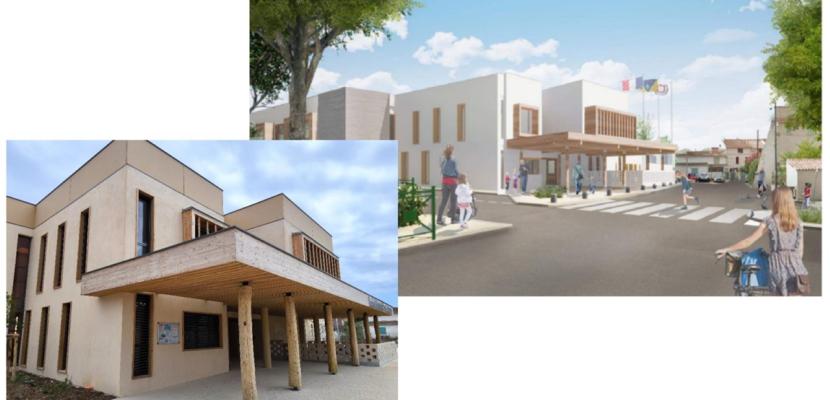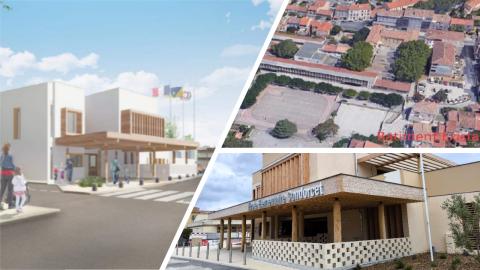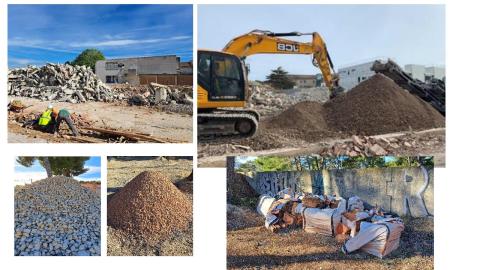
Reuse and recycling of multiple inert waste streams in a public building project

About this good practice
The project involves demolishing a gymnasium and school complex and reconstructing a kindergarten, elementary school, school restaurant, and medical center on a 6,150 m² site. Integrated into an urban area of public facilities and homes, it is supported by the South Region to adopt a circular economy approach. The architect, aided by a circular economy project manager, incorporated specific circular economy requests into the public procurement process. A detailed resource assessment identified materials for reuse and recycling, including furniture, ceiling slabs, a gas boiler, stone rubble, electrical equipment, and sanitary ware. Some items were reused on site, while others were recovered by local associations and residents.
The deconstruction produced over 1,500 tonnes of concrete, which was crushed and screened for reuse in gabion filling, backfilling, and sewage sand. Tiles and asphalt were also recycled. The circular economy project manager oversaw the bidding process, ensuring standards for reuse and recycling. The city provided a 3 km plot for treating deconstruction concrete with a mobile crusher/screener, securing the future use of the site. Tiles were recovered for applications like deck protection and gabion filling, while asphalt was reused for backfill. Key stakeholders included the city of Six-Fours (owner), the architect, the circular economy project manager, and construction companies, essential for recycling efforts.
Expert opinion
Resources needed
Political commitment to CE: the town of Six-Fours signed a green deal with the region.
CE assistance: 80 man-days /budget €60,000. Skills: CE, waste management, construction and public works engineering and project management, ability to coordinate and raise awareness among stakeholders.
Evidence of success
More than 2,000 t were reused and recycled on site, which means that landfill was avoided, but also to save the consumption of natural resources. The city had not foreseen in its project management contract the integration of CE actions. Its participation in the support offered by the region allowed to convince the architect, to call on a CE project manager to carry out a diagnosis and plan for reuse and recycling in the public contract of works for construction companies.
Potential for learning or transfer
The approach used in this project could be transferred to other regions. The main factors to consider include a strong regional support, stakeholder collaboration, and integrating circular economy criteria in public contracts.
This project demonstrates near-total recovery of inert materials from deconstruction/reconstruction. Uncommon and not initially planned, regional support sensitized stakeholders, notably architects, to adopt circular economy principles. A preliminary contract, aided by a Circular Economy Manager, conducted resource/waste diagnosis, integrating circular economy into construction contracts. Success hinges on close collaboration among client, architect, and contractors. Region Sud supported 5 project managers and projects (2020-2024) with NEO ECO company, aligning with the anti-waste for a circular economy (AGEC) law of February 10, 2020 to reinforce the objectives in terms of waste prevention. Some practical changes began slowly in 2022 with limited feedback.
Further information
Images



Website
Good practice owner
You can contact the good practice owner below for more detailed information.
